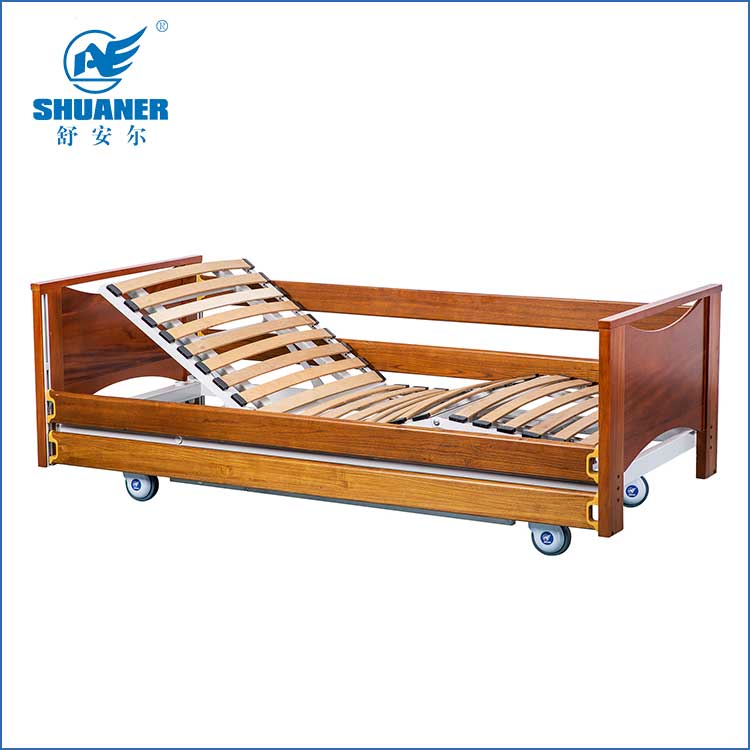- English
- Español
- Português
- русский
- Français
- 日本語
- Deutsch
- tiếng Việt
- Italiano
- Nederlands
- ภาษาไทย
- Polski
- 한국어
- Svenska
- magyar
- Malay
- বাংলা ভাষার
- Dansk
- Suomi
- हिन्दी
- Pilipino
- Türkçe
- Gaeilge
- العربية
- Indonesia
- Norsk
- تمل
- český
- ελληνικά
- український
- Javanese
- فارسی
- தமிழ்
- తెలుగు
- नेपाली
- Burmese
- български
- ລາວ
- Latine
- Қазақша
- Euskal
- Azərbaycan
- Slovenský jazyk
- Македонски
- Lietuvos
- Eesti Keel
- Română
- Slovenski
- मराठी
- Srpski језик
What functions do home care beds generally have?
2024-04-12
Home care beds are specially designed for the elderly, sick or rehabilitated people with limited mobility in the home, and they are equipped with a variety of functions to provide a comfortable, convenient and safe care experience. Home care bed features typically include:
Height adjustment: The height-adjustable function of the bed frame allows caregivers to adjust the height of the bed to facilitate patients getting in and out of bed. It also facilitates caregivers to perform nursing operations and reduce the burden on their backs.
Back and Leg Adjustment: The adjustable back of the bed allows patients to adjust their supine angle, for example to a semi-sitting position when eating, reading or watching TV. Leg adjustments help adjust leg height, promote blood circulation and increase comfort.
Turning function: The automatic or manual turning function helps patients who have been bedridden for a long time change their lying posture and prevent the occurrence of bedsores.
Side rail protection: The foldable side rails can prevent patients from accidentally sliding out of the bed during sleep or activities, increasing safety.
Emergency call button: An emergency call button configured on the bed can quickly notify family members or caregivers when the patient needs it.
Wheels and Brakes: Wheels with locking devices allow the bed to be moved easily and locked when needed for safety.
Easy-to-Clean Materials: Bed frames and mattresses are made of easy-to-clean, waterproof and antibacterial materials to maintain hygiene and reduce the risk of infection.
Mattress Selection: To increase comfort and prevent bedsores, mattresses are often pressure sore-resistant air mattresses or foam mattresses.
Compatibility with additional equipment: Some nursing beds are also compatible with various additional equipment, such as booms, IV poles, night lights, etc., to adapt to different nursing needs.




